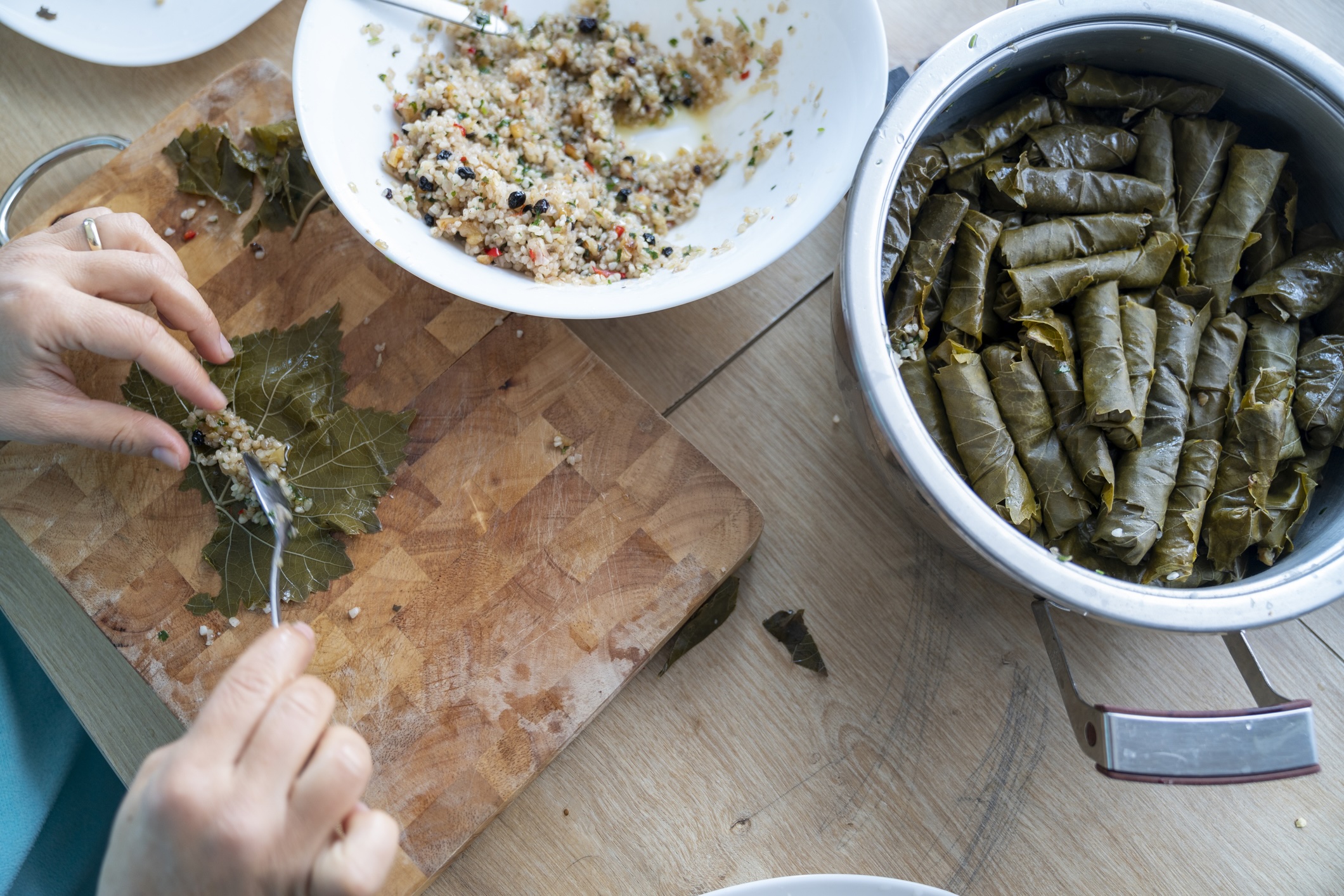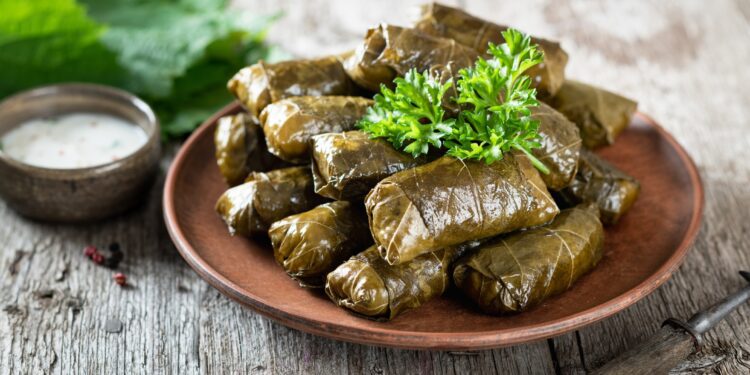Whether served warm or cold, with meat or purely vegan, dolmades are one of the most iconic and beloved dishes in Greek cuisine. These delicate vine leaf parcels, filled with rice, herbs, and sometimes minced meat, are more than just a delicious bite—they’re a taste of Greek tradition, hospitality, and home cooking.
Found in everything from tavernas to festive tables, dolmades are a true meze staple with a story that travels across centuries and regions.
What Are Dolmades?
Dolmades (plural of dolma) are vine leaves stuffed with rice, often mixed with:
-
Fresh herbs like dill, mint, and parsley
-
Finely chopped onion or scallions
-
Lemon juice and olive oil for tang and richness
Some versions also include:
-
Minced beef or lamb for a heartier filling
-
Pine nuts or currants in regional variations
They can be served:
-
Warm, especially the meat-filled ones, often with avgolemono (egg-lemon) sauce
-
Cold, as part of a meze spread, usually vegan and drizzled with olive oil
A Dish with Deep Roots
Dolmades aren’t just Greek—they’re part of a broader Eastern Mediterranean and Middle Eastern tradition of stuffed vegetables, known as dolma, from the Ottoman period.
But over time, Greece has made dolmades its own:
-
In Crete, they’re often vegan and called dolmadakia
-
In northern Greece, they might include regional herbs or different rice varieties
-
In the islands, you’ll find sweeter touches, like raisins or cinnamon
💡 Many families pass down their own dolmades recipe, and every yiayia swears hers is the best.
How Dolmades Are Served in Greece
Dolmades are versatile—they can appear:
-
On a meze platter next to tzatziki, olives, and grilled bread
-
As a starter in upscale restaurants or traditional tavernas
-
In family meals, especially during Lent or fasting periods
They’re best eaten at room temperature or slightly chilled, with a squeeze of lemon and a glass of ouzo, white wine, or tsipouro.

Making Dolmades at Home
While rolling dolmades takes patience, it’s also a beloved ritual in Greek kitchens, often done in groups—one person spreads the leaves, another adds the filling, someone else rolls.
Key tips:
-
Use tender vine leaves (fresh or jarred)
-
Don’t overfill—the rice will expand!
-
Simmer gently in broth or water, covered with a plate to keep them from unraveling
💡 Homemade dolmades taste even better the next day.
Where to Try Dolmades in Greece
You can enjoy dolmades just about anywhere—from a tiny island taverna to a street market in Athens. For an extra-special experience:
-
Visit a local cooking class or food tour
-
Ask for the “house dolmades” in a family-run restaurant
-
Try regional versions in places like Epirus, Crete, or the Peloponnese
Final Thought: A Bite of Greek Soul
Dolmades are simple in ingredients but rich in meaning. They represent care, tradition, and time spent around the table. Whether you’re a first-time visitor or a frequent traveler to Greece, don’t leave without tasting this small but mighty dish.
And if you’re lucky, you might just be invited into a Greek kitchen to help roll a few.











